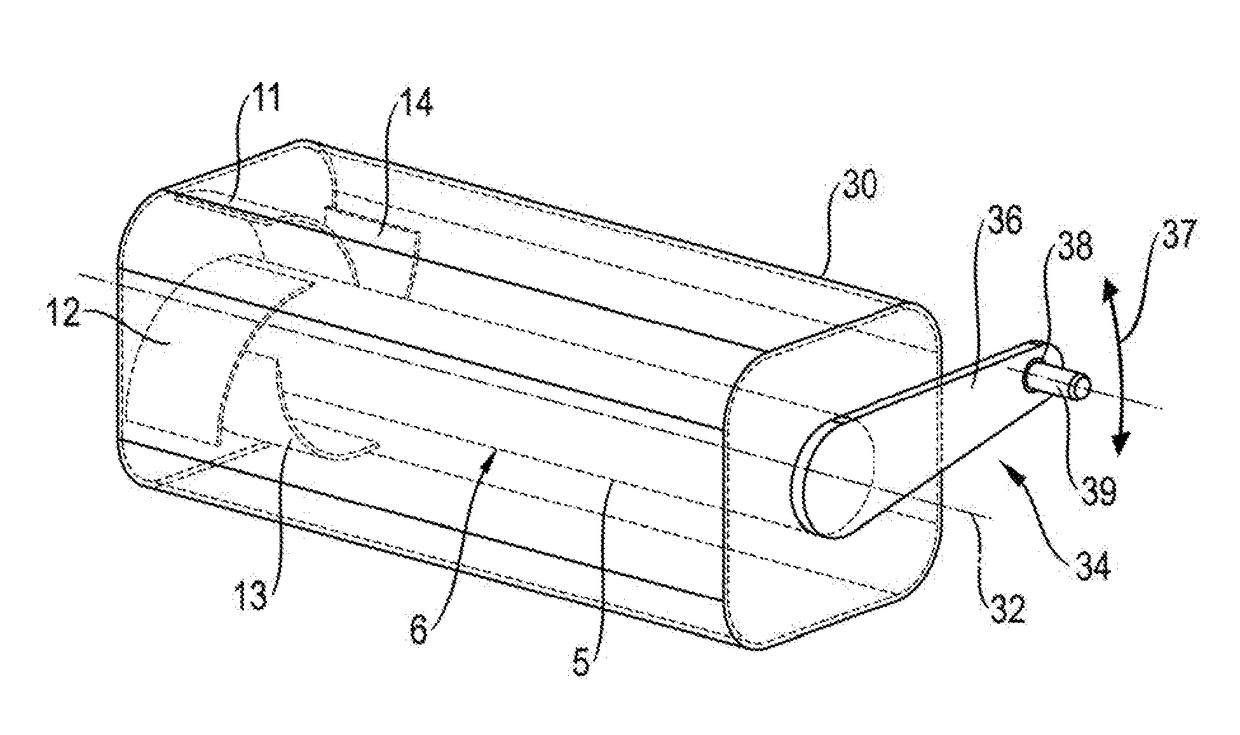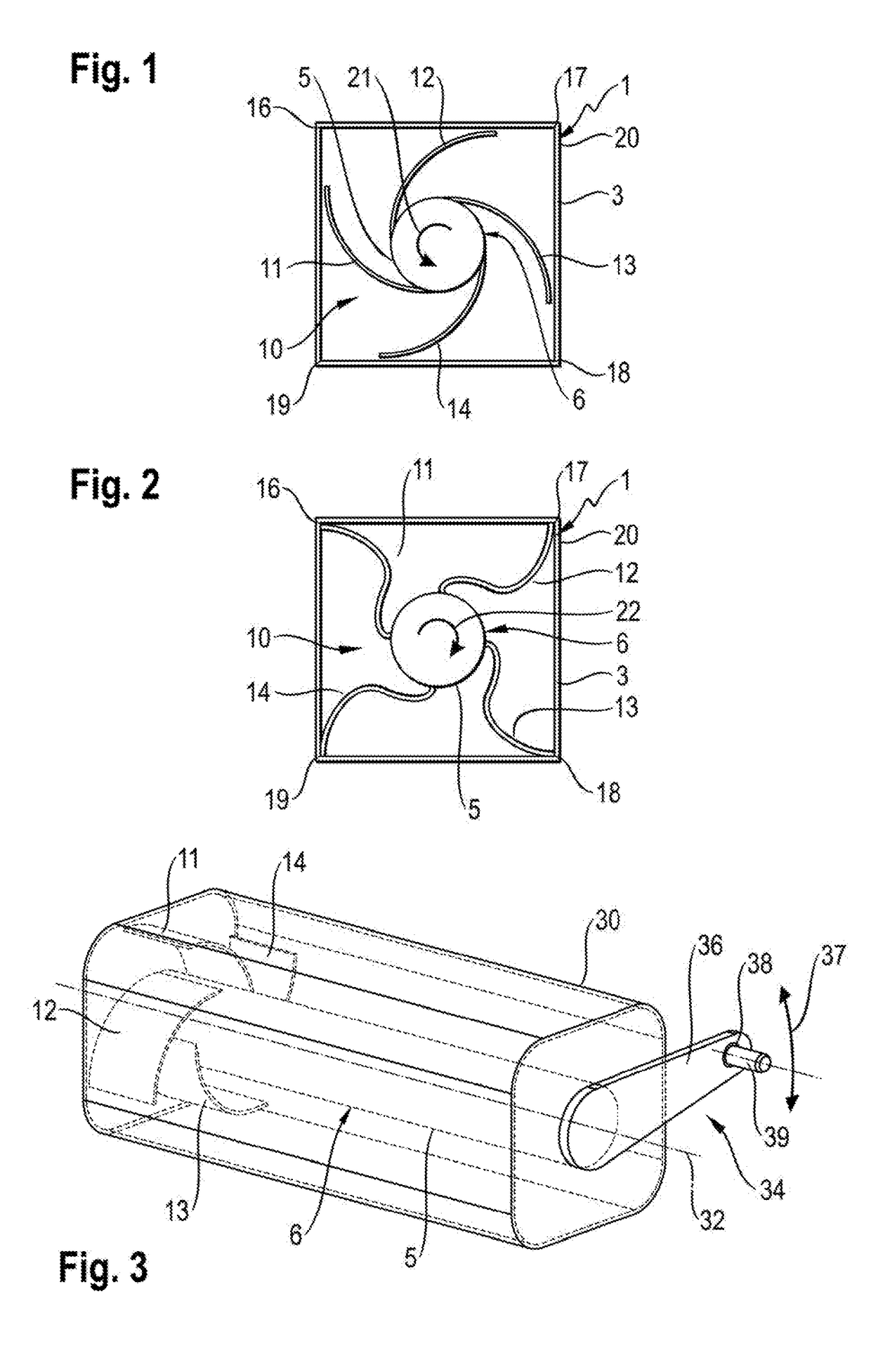Positioning apparatus
- Summary
- Abstract
- Description
- Claims
- Application Information
AI Technical Summary
Benefits of technology
Problems solved by technology
Method used
Image
Examples
Embodiment Construction
[0022]FIGS. 1 and 2 show an elongate carrier 1 in cross section. The elongate carrier 1 is configured as a hollow profile 3 with a rectangular cross section. The elongate carrier 1 is, for example, a sill of a motor vehicle.
[0023]A tubular fluid container 5 is arranged in the elongate carrier 1. The tubular fluid container 5 is, for example, likewise configured as a hollow profile with a circular cross section.
[0024]The tubular fluid container 5 is a fluidic pressure accumulator 6, in particular a hydraulic pressure accumulator. The pressure accumulator 6 serves to store fluidic energy, in particular hydraulic energy.
[0025]The tubular fluid container 5 can be positioned in the elongate carrier 1 with the aid of a positioning apparatus 10. The positioning apparatus 10 comprises a total of four leaf spring-like spring elements 11 to 14. With the aid of the spring elements 11 to 14, the tubular fluid container 5 can advantageously be mounted in the elongate carrier 1 in a sprung manner...
PUM
 Login to View More
Login to View More Abstract
Description
Claims
Application Information
 Login to View More
Login to View More - R&D
- Intellectual Property
- Life Sciences
- Materials
- Tech Scout
- Unparalleled Data Quality
- Higher Quality Content
- 60% Fewer Hallucinations
Browse by: Latest US Patents, China's latest patents, Technical Efficacy Thesaurus, Application Domain, Technology Topic, Popular Technical Reports.
© 2025 PatSnap. All rights reserved.Legal|Privacy policy|Modern Slavery Act Transparency Statement|Sitemap|About US| Contact US: help@patsnap.com


